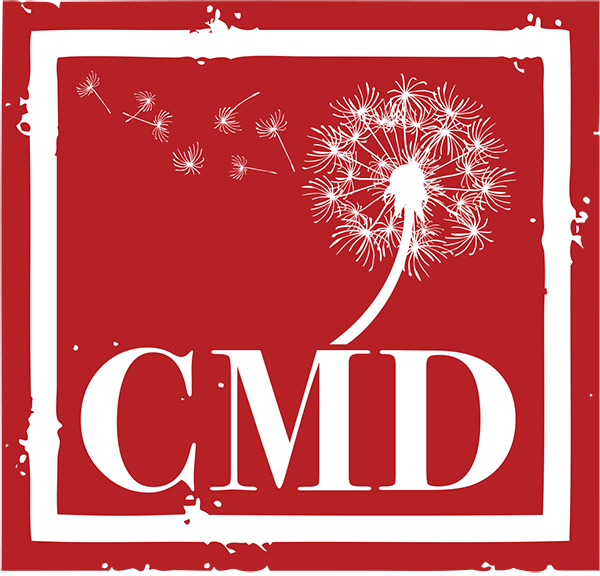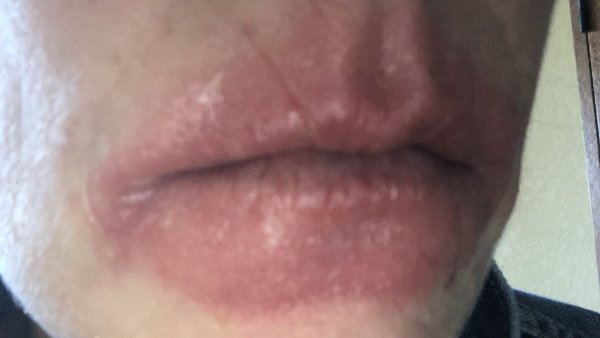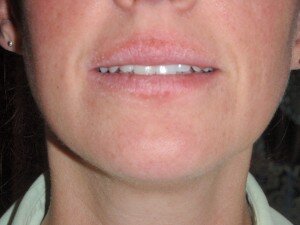Common Causes of Recurrent Lip Rashes (Cheilitis)
Recurrent lip rashes and rashes around the mouth can be caused by various factors such as dermatological diseases, infections, allergic reactions, chemical irritants, and physical irritants. Let’s explore the most common causes of lip rashes so you can help your lips heal.
Infections That Can Affect Lips and Mouth
Infections are often a cause of recurrent lip rashes. Herpes simplex virus (HSV I and HSV II) is a common cause of lip rashes and rashes around the mouth. The vesicular lesions caused by HSV are called cold sores or fever blisters (CMD’s Solution CS Herbal Lip Oil is ideal for treating this). Impetigo is a common bacterial infection that also can cause a rash on the face with oozing or golden-crusted lesions, often affecting the mouth and lips (apply this herbal powder to help impetigo heal faster). Oral thrush (overgrowth of yeast in the mouth) can also cause lip irritation. Yeast infections at the corners of the mouth are somewhat common in people with no teeth. Most dermatologists will easily be able to diagnose these types of lip rashes that are caused by biological pathogens.
Other Causes of Lip Rashes
In addition to external pathogens, internal skin diseases can also have lip involvement. Atopic eczema patients commonly have inflammation of the lips or around the mouth. Though there are usually many other areas of the body with inflammation and itching in such cases, the eczema may be confined to the lips. Psoriasis can manifest on the lips (though this is not very common). The oral form of a skin condition called lichen planus can manifest on the lips, though in such cases it will appear on the inside of the lips (the oral mucosa), not on the outer surface. Hypothyroidism and Sjögren’s Syndrome are diseases that can cause very dry lips (though there are also other symptoms that are more prevalent than just lip involvement in each of those illnesses). Erythema multiforme can cause lesions on the lips when there is mucosal involvement. Chronic glandular cheilitis is a persistent problem in which the lips swell, turn outward (evert), peel and crust repeatedly. It is thought to be caused by chronic irritation by sun, wind and/or tobacco use (smoking or chewing).
Another skin condition that involves a rash around the mouth is perioral dermatitis. This does NOT involve the lips at all. If you have a rash around your mouth, near your nose, or even at the edges of your eyelids, read about perioral dermatitis in this post.
What is Cheilitis?
The general condition of inflamed lips is called cheilitis [pronounced: kī-ˈlīt-əs –> the “chei” part is pronounced like the male name “Kai” (rhymes with “eye”)]. This inflammation can affect the lips themselves as well as the area around the mouth, the vermilion border (the borderline between the lips and the regular skin of the face) and the labial mucosa (the moist part of the lip that is inside the mouth). The symptoms of cheilitis can include lip itchiness, swelling, redness, stinging/burning, oozing, crusting, peeling, and/or flaking.
Cheilitis can be the only symptom or it can be part of a more complex picture of disease. It can develop in patients with Crohn’s disease (often appears as redness and scaling around the lips), it can develop after chronic sun damage (solar cheilitis) or it can result as an allergic reaction to certain drugs. People who have eczema (atopic dermatitis) are prone to develop cheilitis even when their eczema is not active (they have a tendency to have very dry skin and dry lips are prone to cheilitis). Chronic angular cheilitis (cracking at the lateral corners of the lips; also called perlèche) can develop when there is a deficiency of certain nutrients such as B vitamins (esp. riboflavin), iron (may also have generalized itchy skin), and/or zinc; it can develop as an irritant reaction to saliva (often seen in teething babies and people who wear dentures), or it can result from frequent licking of the lips (often the patient doesn’t even realize they are doing it) . Enzymes in our saliva are irritating to the delicate skin of our lips and when saliva on the lips dries, it leads to further evaporation of moisture in our lips. So frequent licking of the lips, lip biting, drooling at night or mouth breathing can cause direct irritation or dryness that may lead to cheilitis over time.
Exfoliative cheilitis is when the lips continuously peel and this condition can develop from any type of chronic cheilitis or can be triggered by irritant or contact dermatitis.
Allergens and Irritants Causing Cheilitis
Cheilitis can also be caused by allergens or irritants and sometimes it takes a good deal of detective work to figure out what the underlying trigger is. Just so you are aware, there are far too many possible allergens and irritants that cause lip rashes or rashes elsewhere on the skin for me to list all of them here. Any substance that contains protein molecules has the potential to be an allergen to a human. People who have atopic eczema or have a history of sensitive skin are going to be more likely to develop allergic contact dermatitis. The rest of this post will cover the most common allergens and irritants that cause chronic or recurrent cheilitis. I will list the types of products the substances are most commonly found in so you can learn to look for these ingredients and avoid them.
You can develop an allergy to an ingredient that you never reacted to in the past. This is called a Type IV Hypersensitivity Reaction: you develop the allergy by being exposed to the particular substance repeatedly over a period of time. So that lipstick that you’ve been wearing for 10 years… it can suddenly cause itching and swelling of your lips even though that had never happened all the times you’ve worn it in the past. In addition, it is especially important to avoid these potential allergens in all the products you use because even if these allergens do not come into direct contact with your lips themselves, contact with skin anywhere on the body can trigger or aggravate your lips. I shall list them in order of most likely culprit to least likely.
Don’t forget – it may not just be something YOU are putting on YOUR lips that is causing a reaction. A rash on YOUR lips may result from the lip balm or skin products your kissing partner uses! Pokey facial hair can be quite the physical irritant that causes lip or mouth rashes if you are kissing someone with a mustache or beard. Wind, sun, irritating fabrics in a scarf or the collar of a coat that rubs on your chin or covers your mouth in winter (especially for skiers/snowboarders) can cause rashes and redness, so be sure to consider your lifestyle when trying to assess the cause of your recurrent mouth, chin or lip rash.
If you suffer from recurrent or chronic lip rash and you cannot figure out the cause, it would be advisable to avoid all of the ingredients listed below in every one skin care and hygiene product that regularly touches your skin. These ingredients may be found in lotions, balms, ointments, sunblock, cleansers, soap, shampoo, conditioner, toners, cosmetics (foundation, mascara, lipstick/gloss, pressed powder), makeup remover, laundry detergent, body wash, toothpaste, floss, mouthwash.
Inflamed lips due to allergic reaction in patient with underlying atopic eczema
The Most Common Allergens Found in Skin Care and Personal Hygiene Products
**Fragrance** (avoid EVERYTHING that lists “fragrance” among its ingredients, especially all skincare products as well as laundry detergent, fabric softener and dryer sheets)
Propolis (found in lotions, toothpaste, unfiltered honey)
Beeswax (aka cera alba) – it is not the wax but the propolis (that gets mixed in during harvesting of honeycomb) that causes a reaction in those with propolis allergy (found in mascara, lotions, sunscreens, ointments/balms/salves, dental floss, hair-removing wax)
Chemical sun block ingredients (Octylcrylene, Avobenzone, Octinoxate, Octisalate, Oxybenzone); stick with the minerals zinc oxide and/or titanium oxide only
Artificial flavors or dyes (especially red dyes in food and lipsticks)
Balsam of Peru (in many cosmetics and packaged foods; if you are allergic to propolis, you are likely allergic to this as well.)
Carnauba Wax (those allergic to propolis may cross react with carnauba wax, a plant-based wax found in many vegan lip balms, mascaras, hair styling products)
Lanolin (emollient in many lotion, lip balms, lipsticks, ointments/balms)
Methylchloroisothiazolinone /methylisothiazolinone (preservative found in MANY liquid cleansers such as body wash, shampoo, laundry detergent and BABY WIPES)
Parabens (preservatives in MANY skin care and personal hygiene products)
Propyl Gallate (antioxidant found in lipsticks and some foods that contain vegetable oils)
Fluoride (in toothpaste)
Tocopherol acetate (in lotions and sometimes added to Vitamin E oil)
Oils: castor oil, olive oil, almond oil, coconut oil (not common allergens, but possible)
Certain essential oils, esp. essential oils of citrus fruits (limonene)
The Most Common Chemical Irritants Found in Skin Care and Personal Hygiene Products
Benzoic acid (preservative in foods and cosmetics)
Bronopol (preservative in cosmetics and skin care products)
Dowicil 200 (preservative in cosmetics and skin care products)
Lactic acid (an alpha hodroxy acid; found in exfoliating and anti-wrinkle products)
Nonionic emulsifiers (found in lotions, liquid cleansers, shampoos, conditioners)
Propylene Glycol (found in many lotions and hair conditioners)
Quaternary ammonium compounds (such as benzalkonium chloride and benzethonium chloride; anti-static properties; used in shampoos, fabric softener)
Sodium lauryl sulfate (most common cleansing agent in liquid soaps, shampoo, toothpaste)
Urea (emollient; in many lotions, often in those specifically formulated for sensitive skin!)
Other Allergens & Irritants That Can Cause Cheilitis
Most lip rashes from allergens are caused by ingredients in products you directly apply to your skin. But keep in mind that allergens found in foods, fabrics, or things that touch your mouth or lips can also cause a chronic mouth or lip rash. It takes quite the detective to figure the culprit out sometimes. Here are more things to look for:
Latex/rubber (if you are allergic to Balsam of Peru, you are likely allergic to this as well)
Cinnamic acid – found in real cinnamon (the spice) as well as in food, bath and body products flavored or scented like cinnamon (if you are allergic to Balsam of Peru, you are likely allergic to this as well)
Cinnamyl alcohol – used in flavoring and scenting bath and body care products (if you are allergic to Balsam of Peru, you are likely allergic to this as well)
Vanillin – an artificial flavoring (if you are allergic to Balsam of Peru, you are likely allergic to this as well)
Citrus fruit peel and essential oils of citrus fruits (limonene) (if you are allergic to Balsam of Peru, you are likely allergic to this as well; don’t peel an orange or lemon with your teeth. Sometimes just the citrus juice will cause a lip reaction)
Artificial flavors in foods
Dyes in foods
Dyes in fabrics
Dyes or fragrances in facial tissues, toilet paper, napkins, paper towels
Formaldehyde (used in making tissues, toilet paper, napkins, paper towels!)
Nail polish/varnish (esp. from nail biting)
Nickel (Do not put any paper clips, metal instruments or cheap utensils in your mouth. Do not wear cheap jewelry. Nickel in the metal casing of lip stick can also cause lip rash.)
Sorbic acid (food preservative)
Musical instruments. They may be made of a metal or exotic wood your skin reacts to or they may have a varnish, resin or wax on them you are allergic to (for example, the sugarbag wax used for didgeridoo mouthpieces is very high in propolis). Cane reeds can also be an allergen.
Orthodontic/dental appliances
Mangoes (the skin has an oil in it similar to that in poison ivy)
Coffee (reported but rare)
Carrots (reported but rare)
Oral retinoids such as isotretinoin (a.k.a. Accutane/Roaccutane, uses to treat severe acne) and acitretin (a.k.a. Soriatane, used to treat psoriasis)
In addition to avoiding the above known skin allergens and irritants, if you suffer from a chronic lip rash you should also use common sense when it comes to the foods and drinks that come into contact with your lips. Avoid spicy foods and acidic foods, esp. chili peppers (found in Mexican and many ethnic foods), cinnamon, tomato sauces, orange juice, lemon juice, balsamic vinegar and any other foods or drink that make your lips sting, burn, swell or itch. Keep a food journal if you need help figuring out what foods and drinks aggravate your lips.
Tips To Help Your Lip Rash Heal Faster
Try your best not to lick your lips – ever. Become aware if this is your habit.
Drink enough water on days when you have to talk more to avoid your lips drying out (esp. if you have a job where you have to speak often).
Rinse fruits and veggies thoroughly – they often put wax on them at the grocery store (never eat the skin of mangoes)
Increase Vit B (esp. riboflavin), iron, and zinc (deficiencies in these nutrients alone may cause cheilitis).
Take Omega-3 fatty acid supplement (my favorites are Cod Liver Oil or Tuna Omega-3 capsules from Standard Process – available through healthcare practitioners).
Apply CMD Skin Solutions’ RawRedemption™ Herbal Lip Oil if lips are chronically peeling, inflamed, red, raw, or otherwise irritated. You could also try CMD’s LittleRedRash™ Ointment which is softer to apply than a lip balm, but has more staying power than the lip oil.
When lips are less raw/tender, apply a beeswax-free lip balm (like CMD Skin Solutions’ BeeswaxFree Lip Balm or Solution CS Herbal Lip Balm if you have a tendency for cold sores) to keep lips moist and supple. Dry lips are vulnerable to developing rashes so care for your lips regularly.
Get a custom formulation of Chinese Herbal Medicine to take internally (helps reduce inflammation, heal skin, and balance the immune system to reduce over-reaction to allergens). Find a TCM practitioner near you experienced in treating skin ailments.
Scaling, peeling, and dryness as inflammation resolves
Lips are sensitive and they can take 2 to 4 weeks (or longer) to completely heal once ALL the triggering factors have been removed from contact with the body. And they may continue to react very quickly to even the smallest amount of allergen while they are at the height of their sensitivity. Be patient.
Try be a good detective and pay attention to all the things that come into contact with your skin that make the lip rash/inflammation worse or cause itching. And be aware that some things might be out of your control if you spend time away from your own home: laundry detergents and fabric softener used in other homes (or hotels!) you stay at or ingredients in foods served at restaurants. There may be multiple allergens or irritants that are contributing to your rash. Keep a journal to make the detective work a bit easier. And consider patch testing from an allergist or dermatologist if all this information still does not lead you to the source of your specific lip rash. Good luck and PLEASE share your story or questions with us on social media. Your experience may help others suffering from this uncomfortable (and often embarrassing) condition.
For additional information on cheilitis and lip rashes, visit this fabulous resource: visit this fabulous resource : www.DermNetNZ.org.



